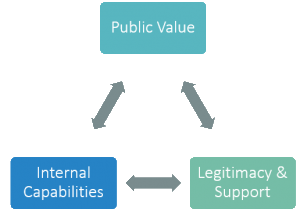State and regional transportation agencies can engage in the AFV market in a number of ways – their level of engagement largely depends on their available resources and cumulative level of experience. See which profile best describes your agency and then explore the AFV Action Guide that gives more detailed actions below. The interactive guide below helps government managers step through the process of AFV engagement, from the early stages of learning (“Getting started”) to advanced stages of engagement (“Leaders”), highlighting milestones along the way. The Action Guide is based on the 2013 PEV Action Tool, developed by the Center for Climate and Energy Solutions for Washington State Department of Transportation, Federal Highway Administration, and seven other state DOTs.
Starting Points
Agencies usually begin work on AFVs through Starting Points, which are external and internal prompts for the agency to begin acting on AFVs (e.g., an executive order to study what the state DOT can do on AFV deployment, or a request by internal leadership to explore potential AFV projects). Agencies must often find implicit or explicit support for their efforts to begin work on AFVs from authorities such as the governor or political appointees within the agency.
From the perspective of the public value triangle, a DOT beginning at Starting Points understands the broad reasons why AFVs are of interest to the agency, but has not articulated a plan of action for getting involved with AFVs. The DOT works to gain external legitimacy and support by looking for support from high-level external authorities (e.g., governor) to begin work on AFVs. The DOT can also have relationships and create communication channels with other agencies and private entities working on AFVs, but may not have worked with them on AFVs specifically. The DOT is enhancing its internal capabilities but has almost no institutional experience with AFV deployment. The DOT needs support from high-level internal authorities to begin working on AFVs.
Act on Executive Order or Gubernatorial AFV request
Executive authorization – either formally via an order or informally – is a key entry point into AFV work. Throughout AFV deployment efforts, this Starting Point can be revisited to authorize new actions. The governor appoints DOT leadership, helps set the direction of executive agencies, and has the power to issue executive orders, and therefore has substantial power in influencing the priorities of the DOT. However, some states DOTs have more autonomy and could refrain from conducting work on AFVs unless the governor directly orders it. Some governors have campaigned to deploy AFVs and may order DOTs to conduct work on AFVs.
Next Step(s)
- Advise and participate in dialogues with the governor’s office. Executive decisions regarding AFVs may need to be informed by the DOT’s perspective on AFVs.
- Understand the extent to which DOT staff is willing to work closely with the governor on deploying AFVs. Some state DOTs may be somewhat independent from the governor’s office. States can potentially have a supportive governor but reluctant DOT staff.
Act on legislation or legislative AFV request
In some states, the legislature may drive work on AFVs and authorize AFV work for the state DOT. DOTs may revisit this Starting Point as the legislature enables new DOT actions on AFVs. Legislative action may also require the DOT to work on some facet of AFV deployment by law without being adequately prepared; DOTs can be prepared by advising and commenting on proposed bills through the legislative process.
Next Step(s)
- Advise legislators on the agency’s perspective on AFVs, which could lead to legislative interest and authorization for AFV work. This action can open up new action categories after the DOT is already a Learner, Actor, or Leader.
- Monitor legislative proposals that could potentially harm AFV deployment.
- While the DOT can jump straight to any of the Actor actions from here, the DOT should first articulate the public value proposition for AFVs and undertake some or all of the Learner actions.
Gauge internal DOT interest for proactive AFV deployment
A DOT can sometimes initiate a major initiative on AFVs without any outside authorization. For example, an agency can draw from internal authorization such as climate commitments from the governor, support from DOT leadership, or an unexpected budget surplus. This starting point is preferred for getting involved in AFVs because it is proactive as opposed to reactive; the agency is not forced to do something by an outside entity. However, it may be more difficult to be proactive.
Next Step(s)
- Assess internal interest and identify possible work on AFVs; the DOT staff conducting this information gathering could become the champion for AFV efforts.
- Use the right opportunity to educate leadership on AFV-related opportunities and request formal approval to complete AFV-related work. New projects could be pitched during the budget planning period for the next fiscal year.

